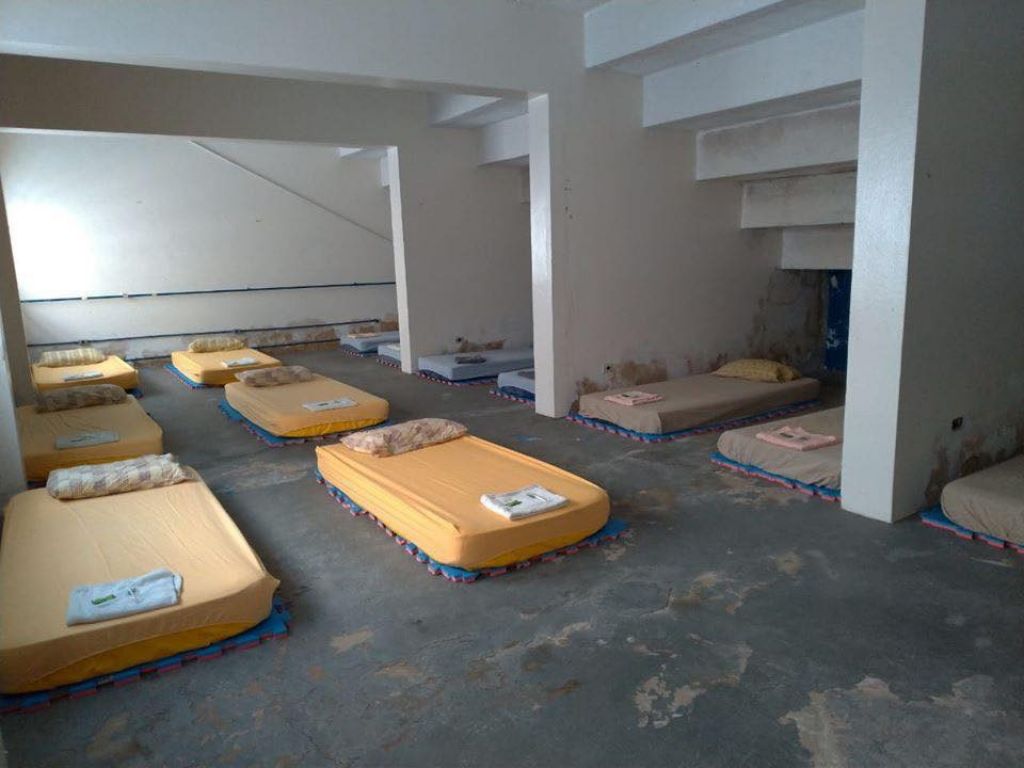COVID-19 crisis: Stadiums shelter the homeless
source: StadiumDB.com; author: michał
 While in many countries living on the street leaves people with nowhere to self-isolate, some cases from Latin America – particularly in Brazil – could prove inspiring for strategies in other countries.
While in many countries living on the street leaves people with nowhere to self-isolate, some cases from Latin America – particularly in Brazil – could prove inspiring for strategies in other countries.
Advertisement
It's easy to play with #stayathome and other hashtags when you're cosy in your apartment and the issue is you cannot leave too often. But for people without a home it's literally impossible to avoid being in the streets and self-isolate from the pandemic.
It's also hard to practice social distancing when the way to get any clothing or food used to be by contacting volunteers or institutions that have often closed their doors now, even if they wish they could stay open.
So what, then? Homeless shelters are the only alternative for many. But with crammed beds and low sanitary standards they're the places most vulnerable to rapid spread of COVID-19. So the homeless have to try really hard not to contract the virus in public or in private, wherever that might be. Especially that many of them are of compromised health and could be in a high-risk pool.
The grotesque case of homeless people being assigned sleeping squares at a parking lot in Las Vegas shows just how risky it may be to go to a homeless shelter. Those 500 people were temporarily evicted from a shelter where COVID-19 was confirmed and are forced to sleep on asphalt until April 3, as they are getting tested and awaiting a safer shelter.
Seeing serious risk of COVID-19 spreading among their homeless communities, many authorities in Brazil have decided to act early. Officially the country has just over 100,000 homeless people, however high unemployment and scarcity of housing mean that the number of poeple at risk of homelessness or living in extreme poverty is in the seven digits.
The state of Pará was the first to act, organising large homeless shelters in mid-March, when there were only 13 confirmed cases statewide. People affected by homelessness were asked to come to local stadiums, where makeshift shelters have been set up.
This includes Mangueirão in Belem, the state's largest stadium. Soldiers brought in mattresses and pillows donated by a local company, toiletteries and catering, while local residents continue to provide other equipment and food. The goal was to create enough room for 400 people but in the end some 500 guests came. While they're all welcome to stay, leaving the place is possible, subject to screening on re-entry.

Similar steps were taken in two other cities of Pará, Marabá and Santarém (Estádio Colosso do Tapajós). In recent days further cities and states followed suit. In Curitiba, the Paraná Clube offered their Estádio Vila Capanema to public authorities and the state ombudsman asked for it to be used as a shelter.
Analogically, reports of such measures are coming from Andradas (Estádio J.K.), Gravatai (Estádio Antônio Vieira Ramos), São Luís (Estádio Governador João Castelo) or Taubaté (Estádio Joaquim de Morais Filho). The smallest shelter houses 20 people with safe distance, Mangueirão remains the largest at 500.
Stadiums have the major advantage of offering vast paved spaces, mostly at least partly protected from the elements. They also have basic sanitary facilities, as well as showers. It's obviously not a perfect solution, especially with some concentration of people occuring even under social distancing guidelines, but it seems better than uncontrolled movement of the vulnerable population in the streets.
Brazil isn't the only country to use stadiums as shelters. Estadio Centenario in Montevideo, Uruguay, has also been used in a similar way. However, here the shelter is limited to people only of the highest risk groups, that is over 65, immunocompromised or with other potentially threatening conditions.
Advertisement

 StadiumDB
StadiumDB